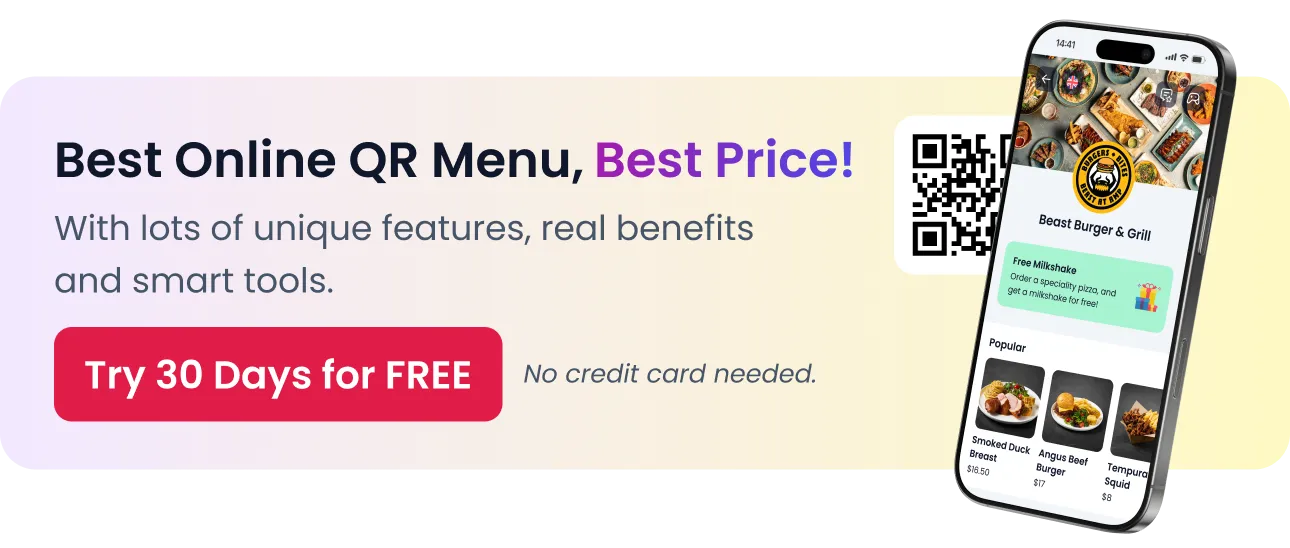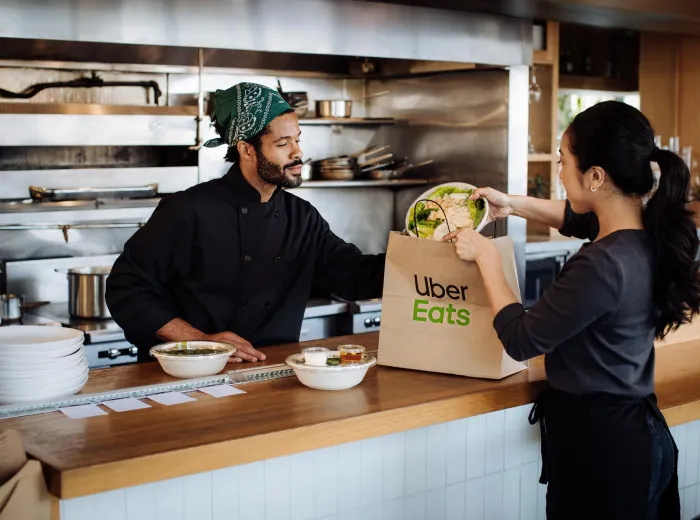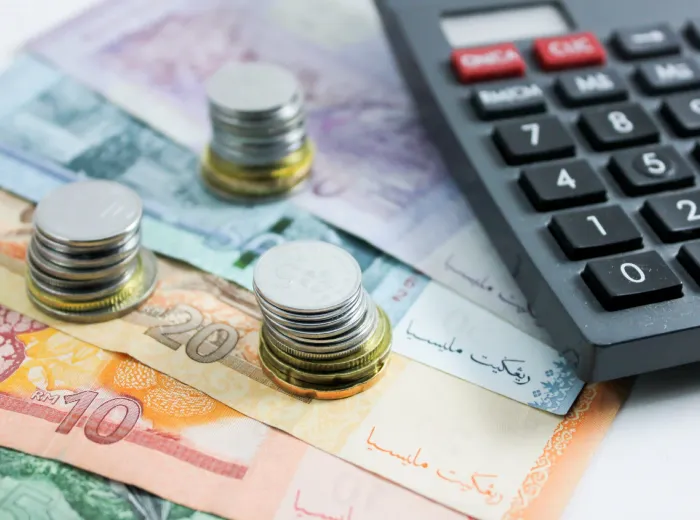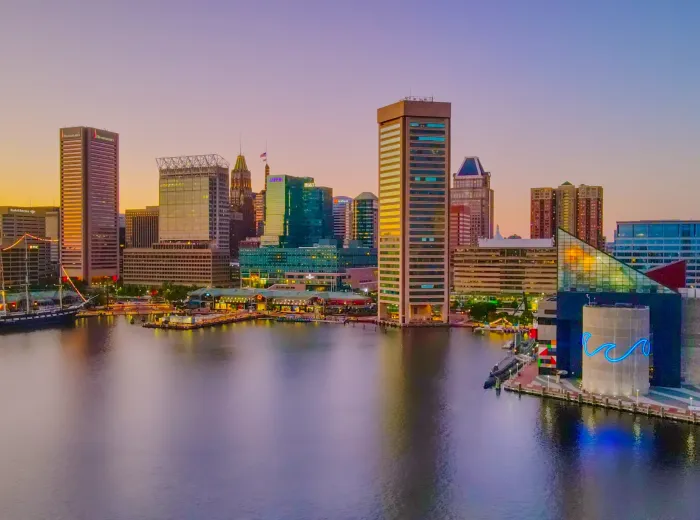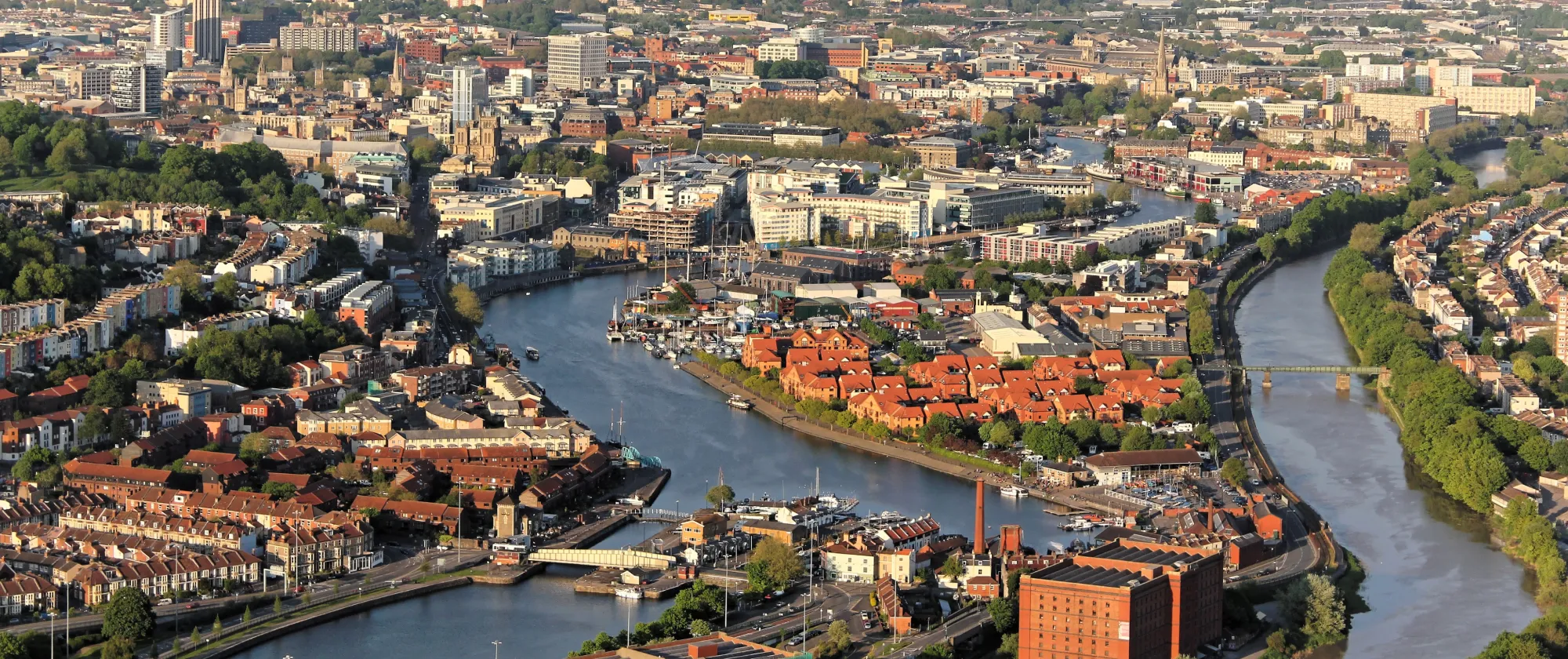
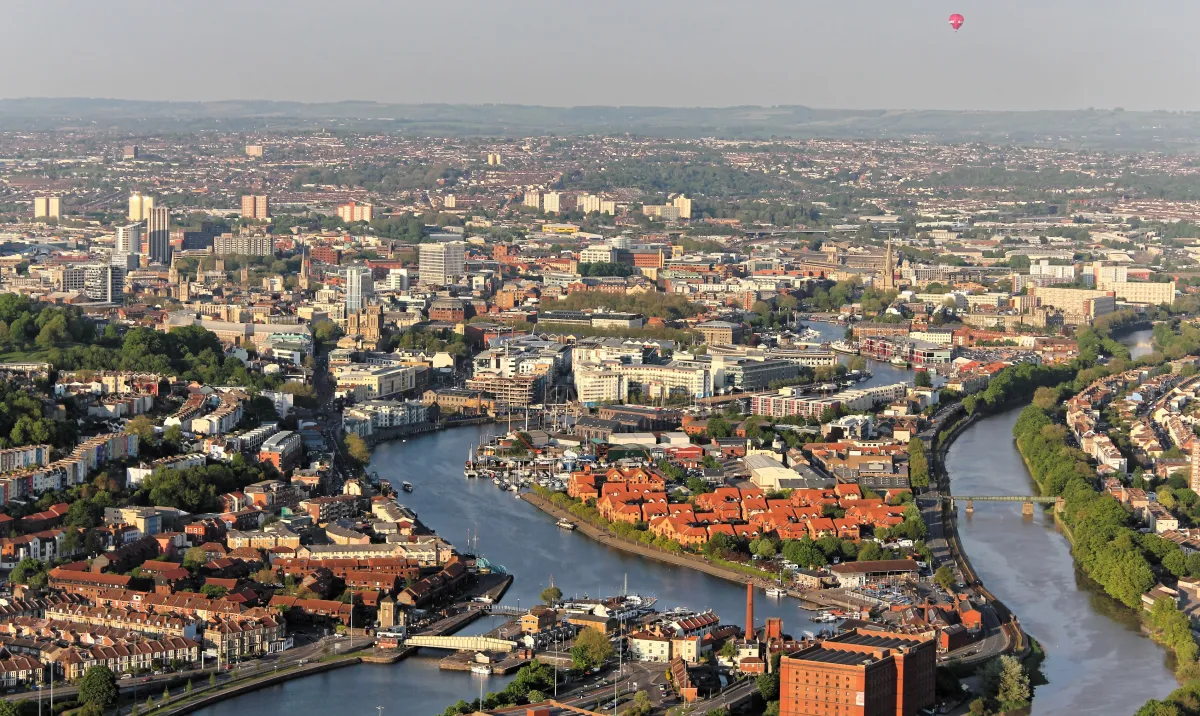
How Much Does It Cost to Open a Restaurant in Bristol in 2025?
Opening a restaurant in Bristol can be an exciting yet challenging venture. As one of the UK’s most vibrant cities, Bristol boasts a thriving food scene, attracting both locals and tourists. However, before you dive into the restaurant industry, understanding the costs involved is crucial. From securing a prime location to acquiring the necessary permits, the financial planning stage can make or break your success.
The total cost of opening a restaurant in Bristol depends on multiple factors, such as the type of restaurant, property lease, equipment, staffing, and marketing efforts. Whether you’re planning to open a casual café, a fine dining establishment, or a quick-service eatery, your startup budget will vary significantly.
This guide will walk you through all the essential expenses involved in opening a restaurant in Bristol, including:
- Legal and registration fees – Business formation, permits, and compliance costs
- Property and lease expenses – Renting vs. buying, renovations, and hidden fees
- Equipment and kitchen setup – Costs of appliances, furniture, and dining area essentials
- Staffing and payroll – Salaries, recruitment, and training costs
- Food and inventory expenses – Sourcing quality ingredients and managing supply chains
- Marketing and branding – Online and offline promotional costs
- Ongoing operational expenses – Rent, utilities, and insurance
By the end of this guide, you will have a clear understanding of how much you need to invest and strategies to optimize your budget. Now, let’s break down the costs step by step.
Understanding the Cost of Opening a Restaurant in Bristol
Bristol is home to a dynamic and diverse restaurant industry, with food lovers seeking everything from street food to fine dining experiences. However, opening a restaurant here comes with unique financial considerations. Various factors impact the total investment required, from location and rent to staffing and marketing. In this section, we’ll explore the key financial elements that determine how much it costs to launch your restaurant in Bristol.
Why Bristol is a Great City for Restaurants
Bristol’s food scene is booming, making it a prime location for new restaurant ventures. The city’s diverse population, strong tourism sector, and thriving student community create a steady demand for different types of dining experiences.
Key reasons to choose Bristol for your restaurant:
- Growing food culture – A mix of independent eateries, food markets, and high-end restaurants
- Tourist attraction – A popular city with millions of annual visitors
- University presence – A large student population ensures steady foot traffic
- Support for independent businesses – The city favors local, unique, and sustainable food businesses
Why it matters: Choosing a location with high demand can help you generate more revenue and recover your initial investment faster.
Key Factors Affecting Startup Costs
The total investment required to open a restaurant in Bristol depends on several elements. Understanding these factors helps you estimate a more accurate budget.
Top factors influencing restaurant costs:
- Type of restaurant – A fine dining restaurant requires a higher budget than a casual café.
- Location – City center locations demand higher rent than suburban or neighborhood spots.
- Size of the venue – Larger spaces require higher rent, more staff, and additional equipment.
- Renovations and interior design – Customizing the space to fit your theme can be costly.
- Kitchen and equipment – Purchasing or leasing kitchen appliances significantly impacts startup expenses.
- Licensing and permits – Food business registration, alcohol licensing, and safety compliance add to initial costs.
- Marketing efforts – Investing in branding, social media ads, and promotions affects your launch budget.
Why it matters: Identifying these cost drivers early will help you plan your finances better and avoid unexpected expenses.
How Restaurant Type Influences Expenses
The type of restaurant you open in Bristol will significantly impact your initial and ongoing costs. Here’s a general breakdown of how different restaurant models compare in terms of investment:
| Restaurant Type | Approximate Startup Cost Range | Main Cost Considerations |
|---|---|---|
| Fast food/takeaway | £40,000 – £100,000 | Small space, high equipment costs |
| Casual dining | £80,000 – £200,000 | Mid-range rent, moderate décor costs |
| Fine dining | £150,000 – £500,000+ | High-end interior, top-tier ingredients |
| Food truck | £20,000 – £100,000 | Lower rent, mobility costs |
| Cafe or coffee shop | £30,000 – £150,000 | Equipment-heavy, moderate lease |
Why it matters: Your restaurant concept will define your financial needs. A takeaway business may have lower rental expenses but higher equipment costs, while a fine dining establishment demands premium interior design and top-tier staff.
Now that you understand the key factors affecting the cost of opening a restaurant in Bristol, let’s dive into initial costs and legal requirements.
Initial Costs: Getting Started
Before opening a restaurant in Bristol, you’ll need to cover several essential startup costs. These initial expenses ensure your business is legally compliant, properly registered, and ready to operate. Skipping any of these steps can lead to delays or fines, so it’s crucial to budget accordingly. In this section, we’ll break down the key startup costs, including business registration, legal fees, and required licenses.
Business Registration & Legal Fees
Registering your restaurant as a legal entity is the first step in launching your business. You have several options when it comes to structuring your business, and each comes with its own cost considerations.
Business Structure Options:
- Sole Trader – The simplest and cheapest option, but you are personally liable for any debts.
- Registration cost: Free (via HMRC)
- Self-assessment tax return required
- Limited Company – Provides liability protection but requires more administration.
- Registration fee: £12 (online) or £40 (paper form) via Companies House
- Annual accounts and tax filings required
- Partnership – Suitable for multiple owners sharing responsibility.
- Registration cost: Free (via HMRC for general partnerships)
- LLP (Limited Liability Partnership) fee: £40+
Additional Legal Fees:
- Trademark registration (optional but recommended): £170+
- Solicitor fees (for lease agreements, contracts, or legal advice): £500 – £2,000
Why it matters: Choosing the right business structure impacts your tax obligations, liability, and administrative workload. Registering your business correctly from the start prevents legal complications down the line.
Licenses and Permits
To operate legally in Bristol, your restaurant must obtain several licenses and permits. The costs vary depending on the type of restaurant, whether you serve alcohol, and if you plan to play music or use outdoor seating.
Essential Licenses and Their Costs:
| License/Permit | Cost Estimate | Required For |
|---|---|---|
| Food Business Registration | Free | All restaurants (must be registered at least 28 days before opening) |
| Food Hygiene Certificate | £50 – £200 | Compliance with food safety regulations |
| Alcohol Premises License | £100 – £1,905 | Serving alcohol (varies based on business rate valuation) |
| Personal Alcohol License | ~£37 | Individuals responsible for alcohol sales |
| Music License (PPL & PRS) | £250+ per year | Playing background music for customers |
| Outdoor Seating Permit | £100 – £500+ | Using pavement or outdoor dining spaces |
| Waste Disposal License | £150 – £500+ | Managing commercial waste legally |
Why it matters: Missing any of these licenses can result in fines or business closure. Budgeting for these permits early ensures you meet legal requirements before launch.
Now that we’ve covered the initial legal and licensing costs, the next major expense is property and lease expenses.
Property and Lease Expenses
Securing the right property is one of the biggest financial commitments when opening a restaurant in Bristol. Whether you lease or buy, location and space requirements will significantly impact your startup and operational costs. In this section, we’ll explore the costs of leasing vs. buying, renovations, and hidden fees that restaurant owners should be aware of.
Buying vs. Leasing a Restaurant Space
Deciding whether to lease or buy your restaurant property depends on your budget, business goals, and long-term vision. Each option has its advantages and cost implications.
Leasing a Restaurant in Bristol
Leasing is the preferred choice for most new restaurant owners due to lower upfront costs. However, rent prices in Bristol vary widely depending on location and property size.
- City center locations (e.g., Clifton, Harbourside, Cabot Circus) → £30,000 – £100,000+ per year
- Suburban areas (e.g., Redland, Bedminster, Southville) → £15,000 – £40,000 per year
- Smaller takeaway spaces → £10,000 – £25,000 per year
Buying a Restaurant Property
Buying property requires significant capital but offers long-term investment benefits.
- Average cost of restaurant properties in Bristol: £250,000 – £1,500,000+
- Additional costs:
- Stamp duty: 2% – 5% of property value
- Solicitor and legal fees: £3,000 – £10,000
- Mortgage deposit: 20% – 40% of purchase price
Why it matters: Leasing requires less initial investment but comes with long-term rental obligations, while buying offers stability but demands significant upfront capital.
Hidden Costs in Lease Agreements
When signing a lease, it’s crucial to watch out for additional expenses that might not be obvious at first glance.
Common Hidden Costs in Leases:
- Service charges – Covers maintenance of shared spaces, usually £2 – £10 per square meter.
- Property taxes (Business Rates) – Restaurants pay business rates based on property value.
- Rateable value under £12,000 → No business rates
- Rateable value £12,001 – £51,000 → Small business rates apply
- Rateable value over £51,000 → Full business rates apply
- Lease renewal and rent increases – Some contracts include automatic rent increases.
- Dilapidations – End-of-lease repair costs can range from £5,000 – £50,000+.
- Break clauses – Important for flexibility in case your business needs to relocate.
Why it matters: Understanding lease terms upfront can prevent unexpected costs and financial strain in the future.
Renovation and Interior Setup
Once you secure a property, you’ll likely need to renovate and customize the space to match your restaurant’s theme and functional needs.
Estimated Renovation Costs:
| Renovation Type | Cost Estimate |
|---|---|
| Structural modifications | £10,000 – £50,000 |
| Kitchen refurbishment | £15,000 – £100,000 |
| Plumbing & electrical | £5,000 – £30,000 |
| Interior decor & design | £10,000 – £75,000 |
| Flooring & lighting | £5,000 – £20,000 |
| Fire safety compliance | £2,000 – £10,000 |
Cost-Saving Tips for Renovations:
- Consider leasing a property with an existing restaurant setup to reduce renovation costs.
- Opt for second-hand furniture and fixtures to cut expenses.
- Work with local designers and contractors to negotiate better rates.
Why it matters: Renovation costs can quickly escalate, so planning a detailed budget and finding cost-effective solutions will help keep expenses under control.
With your property secured and set up, the next major cost is kitchen equipment and dining area setup.
Equipment and Kitchen Setup
Investing in the right equipment is crucial for running a smooth restaurant operation. From high-quality kitchen appliances to dining area essentials, these costs can quickly add up. The key is to balance quality with affordability while ensuring your kitchen meets regulatory standards.
Essential Kitchen Equipment
Your kitchen setup will depend on your restaurant’s menu and service style, but most restaurants require a core set of cooking and storage appliances.
Key Kitchen Equipment and Their Costs:
| Equipment | Estimated Cost (New) | Estimated Cost (Used) |
|---|---|---|
| Commercial oven | £2,000 – £10,000 | £800 – £5,000 |
| Industrial stove/grill | £1,500 – £8,000 | £700 – £4,500 |
| Deep fryer | £500 – £3,000 | £300 – £1,500 |
| Refrigeration system | £3,000 – £15,000 | £1,500 – £8,000 |
| Walk-in freezer | £5,000 – £20,000 | £2,500 – £10,000 |
| Prep tables & counters | £500 – £2,000 | £200 – £1,200 |
| Dishwashing station | £2,000 – £6,000 | £1,000 – £3,500 |
| Food processors & blenders | £300 – £2,000 | £150 – £1,000 |
Ways to Reduce Kitchen Equipment Costs:
- Lease equipment instead of buying – Helps manage cash flow and upgrades.
- Buy second-hand from restaurant liquidations – Can save 30%–50% on appliances.
- Consider energy-efficient models – Reduces long-term utility bills.
Why it matters: Kitchen equipment is a major investment, and choosing the right setup can improve efficiency and reduce long-term costs.
Dining Area and Service Equipment
Your restaurant’s ambiance and guest experience depend on the quality of your dining area setup.
Dining Area Setup Costs:
| Item | Estimated Cost |
|---|---|
| Tables & chairs | £3,000 – £20,000 |
| Bar setup (if needed) | £5,000 – £30,000 |
| POS system & register | £1,500 – £7,000 |
| Plateware & cutlery | £1,000 – £5,000 |
| Glassware & serving trays | £500 – £3,000 |
| Menus & signage | £300 – £2,000 |
Tips to Save on Dining Setup:
- Buy furniture in bulk from restaurant suppliers.
- Choose durable, easy-to-clean materials to reduce maintenance costs.
- Use digital menus to cut printing expenses and update items easily.
Why it matters: A well-furnished dining area enhances customer experience and supports efficient service.
Energy and Utility Setup
Restaurants consume large amounts of energy due to refrigeration, cooking, and heating needs. Proper planning can prevent excessive utility bills.
Average Monthly Utility Costs for Restaurants in Bristol:
- Electricity: £1,000 – £4,000
- Gas: £500 – £2,500
- Water: £200 – £1,000
- Waste disposal: £150 – £800
Ways to Reduce Utility Costs:
- Invest in energy-efficient kitchen appliances (lower electricity/gas usage).
- Install LED lighting to cut electricity costs.
- Use smart thermostats for heating and cooling efficiency.
- Negotiate contracts with utility providers for better rates.
Why it matters: Managing energy expenses can significantly impact long-term profitability.
With your kitchen and dining area fully equipped, the next critical expense is staffing and payroll costs.
Staffing and Payroll Costs
Hiring the right team is essential to running a successful restaurant in Bristol. From chefs and waitstaff to managers and dishwashers, labor costs will likely be one of your largest ongoing expenses. Understanding payroll obligations, legal requirements, and cost-saving strategies will help you manage staffing expenses efficiently.
Hiring the Right Team
The number and type of employees you need will depend on your restaurant’s size and concept. Below is an estimate of common restaurant roles and their average salaries in Bristol.
Estimated Annual Salaries for Restaurant Staff:
| Position | Average Salary (Full-Time) | Hourly Rate (Part-Time) |
|---|---|---|
| Head Chef | £30,000 – £50,000 | £14 – £20 |
| Sous Chef | £24,000 – £35,000 | £12 – £16 |
| Line Cook | £20,000 – £28,000 | £10 – £14 |
| Waiter/Waitress | £18,000 – £24,000 | £8 – £12 (plus tips) |
| Restaurant Manager | £28,000 – £45,000 | £14 – £18 |
| Barista (for cafés) | £18,000 – £24,000 | £9 – £12 |
| Bartender | £19,000 – £25,000 | £9 – £13 (plus tips) |
| Dishwasher/Kitchen Porter | £17,000 – £22,000 | £8 – £11 |
How to Determine the Right Staffing Levels:
- Small restaurants or cafés (under 30 seats): ~5–10 employees
- Medium-sized restaurants (30–80 seats): ~10–20 employees
- Large restaurants (80+ seats): ~20–50 employees
Why it matters: Overstaffing leads to high labor costs, while understaffing results in poor service. Finding the right balance is key to profitability.
Employee Benefits and Legal Costs
UK employment laws require restaurant owners to provide certain benefits and comply with legal obligations when hiring staff.
Mandatory Employee Costs in the UK:
- National Minimum Wage (as of 2024):
- Ages 21 and over → £11.44 per hour
- Ages 18-20 → £8.60 per hour
- Under 18 → £6.40 per hour
- National Insurance Contributions (NICs):
- 13.8% for earnings above £9,100 per year (paid by the employer)
- Workplace Pension (Auto-Enrolment):
- Employer contributes at least 3% of salary
- Holiday Pay: Minimum 28 days per year (including bank holidays) for full-time employees
- Sick Pay: £116.75 per week for up to 28 weeks if eligible
Optional Benefits to Attract and Retain Staff:
- Performance-based bonuses
- Staff meals or food discounts
- Flexible shift scheduling
- Career development programs
Why it matters: Providing competitive pay and benefits helps attract skilled staff and reduces turnover, which can be costly in recruitment and training.
Cost-Saving Strategies for Staffing
Hiring and payroll can be a major expense, but there are ways to optimize labor costs while maintaining service quality.
Ways to Reduce Staffing Costs:
- Hire part-time and seasonal workers – Reduces long-term salary commitments.
- Implement a tip-sharing model – Helps supplement wages without increasing fixed payroll.
- Cross-train employees – Enables staff to take on multiple roles, reducing the need for extra hires.
- Use scheduling software – Ensures efficient staffing levels based on demand.
- Outsource non-essential tasks – Consider hiring external services for cleaning, accounting, or marketing.
Why it matters: Controlling labor costs while keeping employees happy is a balancing act. Strategic hiring and scheduling can improve efficiency and profitability.
Food and Supply Costs
Managing food and supply costs efficiently is critical for restaurant profitability. Ingredients, beverages, and essential supplies make up a significant portion of ongoing expenses. Poor inventory management can lead to waste, higher costs, and lower profit margins. In this section, we’ll explore how to source ingredients, manage inventory, and minimize food waste to control expenses effectively.
Sourcing Ingredients and Inventory Management
Your food sourcing strategy will impact both costs and quality. Choosing the right suppliers and managing inventory efficiently can help you maintain consistent pricing and reduce waste.
Common Sourcing Options:
- Local suppliers & farmers’ markets – Fresh, high-quality produce but may be costlier.
- Wholesale distributors (e.g., Bidfood, Brakes, Booker Wholesale) – Bulk purchasing for lower costs.
- Direct import – Can be more affordable for specialty ingredients but requires logistics.
- Cash & carry stores – Flexible sourcing for smaller restaurants needing lower quantities.
Estimated Monthly Food Costs by Restaurant Type:
| Restaurant Type | Estimated Monthly Food Cost |
|---|---|
| Casual Dining | £5,000 – £15,000 |
| Fine Dining | £10,000 – £30,000 |
| Fast Food/Takeaway | £4,000 – £12,000 |
| Café/Coffee Shop | £2,000 – £8,000 |
| Food Truck | £2,000 – £6,000 |
Inventory Management Best Practices:
- Use the FIFO method (First In, First Out) – Ensures older ingredients are used first to prevent spoilage.
- Track food costs as a percentage of sales – Ideally, food costs should be 25%–35% of total revenue.
- Monitor supplier pricing fluctuations – Adjust menu pricing accordingly.
- Conduct weekly stock audits – Helps prevent theft and over-purchasing.
- Invest in inventory management software – Automates tracking and minimizes waste.
Why it matters: Controlling inventory and supplier costs helps maintain profitability while ensuring consistent food quality.
Food Waste Management Costs
Food waste is a hidden expense that can significantly impact your bottom line. Effective waste reduction strategies not only lower costs but also support sustainability efforts.
Common Causes of Food Waste in Restaurants:
- Overstocking perishable ingredients
- Incorrect portion sizing
- Poor storage conditions leading to spoilage
- Customer leftovers due to large servings
- Miscommunication between kitchen and waitstaff
Cost of Food Waste Management in Bristol:
- Food waste disposal fees: £150 – £500 per month
- Specialized waste collection services: £10 – £50 per pickup
- Composting & donation programs: Some are free, while others charge minimal fees
Strategies to Reduce Food Waste and Costs:
- Adjust portion sizes – Offering smaller options reduces plate waste.
- Repurpose unused ingredients – Use vegetable scraps for stocks, day-old bread for croutons, etc.
- Monitor ordering patterns – Avoid over-purchasing slow-moving items.
- Partner with food donation programs – Helps reduce disposal costs and supports local charities.
- Train staff on waste reduction – Proper handling and portioning reduce unnecessary loss.
Why it matters: Reducing food waste can lower supply costs, increase sustainability, and improve profit margins.
Beverage and Non-Food Supply Costs
Beverages and essential non-food supplies contribute to your restaurant’s operating expenses. Managing these costs is key to maintaining profitability.
Estimated Monthly Beverage Costs by Business Type:
| Business Type | Beverage Cost Estimate (Monthly) |
|---|---|
| Casual Dining | £3,000 – £8,000 |
| Fine Dining | £5,000 – £15,000 |
| Coffee Shop | £2,000 – £6,000 |
| Bar | £6,000 – £20,000 |
Non-Food Essentials and Their Costs:
- Cleaning supplies & sanitation → £500 – £2,000 per month
- Takeaway packaging & napkins → £500 – £5,000 per month
- Uniforms & staff supplies → £500 – £3,000 (initial cost)
- Tableware & glassware → £1,000 – £10,000 (initial cost)
Ways to Reduce Beverage and Supply Costs:
- Buy beverages and supplies in bulk from wholesale suppliers.
- Use eco-friendly, reusable packaging to lower long-term costs.
- Implement a waste reduction system for bar and kitchen ingredients.
Why it matters: Controlling beverage and non-food costs ensures profitability while maintaining service quality.
With food and supply costs managed, the next key expense is marketing and branding expenses.
Marketing and Branding Expenses
A strong marketing and branding strategy is crucial for attracting customers and building a loyal following in Bristol’s competitive restaurant scene. Whether you’re launching a fine dining restaurant, a cozy café, or a fast-food takeaway, effective promotion is essential. From website development to social media advertising, marketing expenses can add up quickly. In this section, we’ll break down the costs associated with digital and traditional marketing, as well as branding strategies that drive long-term success.
Digital Marketing Costs
A strong online presence is non-negotiable in today’s restaurant industry. Investing in digital marketing helps you attract and retain customers while increasing brand awareness.
Key Digital Marketing Costs:
| Marketing Strategy | Estimated Cost |
|---|---|
| Website development | £500 – £5,000 (one-time) |
| Domain & hosting | £10 – £50 per month |
| Social media ads (Facebook, Instagram) | £200 – £2,000 per month |
| Google Ads (PPC) | £300 – £5,000 per month |
| SEO services | £500 – £3,000 per month |
| Email marketing software | £20 – £200 per month |
| Online food delivery platform commissions (UberEats, Deliveroo, Just Eat) | 15% – 35% per order |
Cost-Saving Digital Marketing Tips:
- Leverage organic social media marketing – Consistently post high-quality content instead of relying solely on ads.
- Optimize Google My Business for local SEO – A free and powerful way to attract local diners.
- Use influencer marketing wisely – Partner with micro-influencers instead of expensive celebrity endorsements.
- Invest in email marketing – A low-cost way to engage with existing customers.
Why it matters: Digital marketing helps you reach a wider audience with targeted strategies, making it one of the most cost-effective ways to grow your restaurant.
Traditional Marketing Methods
While digital marketing dominates today’s landscape, traditional methods still play a role in attracting local customers, especially for new restaurants.
Estimated Costs of Traditional Marketing:
| Marketing Method | Estimated Cost |
|---|---|
| Flyers & print ads | £200 – £2,000 per campaign |
| Local newspaper/magazine ads | £500 – £5,000 per ad placement |
| Billboards/bus stop ads | £1,000 – £10,000 per month |
| Radio advertising | £500 – £5,000 per campaign |
| Direct mail promotions | £300 – £3,000 per campaign |
| Restaurant launch event | £1,000 – £10,000 |
Cost-Saving Traditional Marketing Tips:
- Focus on local partnerships – Collaborate with nearby businesses for cross-promotion.
- Use referral programs – Encourage word-of-mouth marketing with customer incentives.
- Host events or tastings – Engages the local community and builds customer loyalty.
Why it matters: While traditional marketing methods can be costly, they are effective in reaching older demographics and locals who may not engage with online ads.
Loyalty Programs and Promotions
Building a loyal customer base is more cost-effective than constantly acquiring new customers. A well-designed loyalty program encourages repeat visits and increases revenue.
Types of Restaurant Loyalty Programs:
- Points-based system – Customers earn points for purchases and redeem them for rewards.
- Stamp card programs – Buy X meals, get 1 free.
- Tiered VIP memberships – Offer exclusive perks for frequent diners.
- Referral rewards – Customers receive discounts when they refer friends.
Estimated Costs of Loyalty Programs:
- Custom app-based loyalty program: £1,000 – £10,000 (one-time development)
- Third-party loyalty platforms (e.g., Menuviel): £50 – £300 per month
- Discounts & free items: Depends on frequency and redemption rates
Cost-Saving Tips for Loyalty Programs:
- Start with a simple stamp card or email-based system.
- Use existing POS software with built-in loyalty programs.
- Partner with food delivery platforms that offer built-in customer retention tools.
Why it matters: A well-executed loyalty program boosts customer retention, leading to higher long-term profits.
Operational and Ongoing Costs
Once your restaurant in Bristol is up and running, the expenses don’t stop. Managing operational and ongoing costs effectively is crucial for maintaining profitability. These recurring expenses include rent, utilities, insurance, and financial management. Careful budgeting and cost control strategies will ensure your restaurant remains financially stable.
Monthly Rent and Utilities
Rent is one of the most significant ongoing expenses for restaurant owners in Bristol. The amount depends on location, size, and property type.
Average Monthly Rent Costs in Bristol:
- City centre (Clifton, Harbourside, Cabot Circus): £2,500 – £10,000+
- Suburban areas (Redland, Bedminster, Southville): £1,500 – £5,000
- Small takeaway spaces: £1,000 – £3,500
- Large restaurant spaces (100+ seats): £7,000 – £20,000+
Monthly Utility Expenses:
| Utility | Estimated Monthly Cost |
|---|---|
| Electricity | £1,000 – £4,000 |
| Gas | £500 – £2,500 |
| Water | £200 – £1,000 |
| Internet & phone | £50 – £250 |
| Waste disposal | £150 – £800 |
Tips to Reduce Rent and Utility Costs:
- Negotiate a rent-free period with your landlord during the initial months.
- Use energy-efficient appliances to lower electricity and gas bills.
- Monitor water usage by fixing leaks and using low-flow fixtures.
- Compare utility providers to find the best rates.
Why it matters: Keeping rent and utility costs manageable prevents cash flow problems and ensures long-term sustainability.
Insurance and Legal Compliance
Insurance protects your restaurant from unforeseen financial risks, while compliance ensures you meet legal obligations.
Essential Business Insurance for Restaurants:
| Type of Insurance | Estimated Annual Cost |
|---|---|
| Public liability insurance | £500 – £5,000 |
| Employer’s liability insurance | £300 – £2,500 |
| Business interruption insurance | £1,000 – £5,000 |
| Property insurance | £800 – £5,000 |
| Product liability insurance | £200 – £1,500 |
Legal Compliance Costs:
- Food safety inspections & compliance → £100 – £500
- Fire safety & health regulations → £200 – £1,000
- Alcohol license renewals → £70 – £1,905 (depends on rateable value)
- Music licensing fees (PRS & PPL) → £250+ per year
Why it matters: Without proper insurance, a single lawsuit or disaster could financially cripple your business. Compliance ensures you avoid legal penalties.
Accounting and Financial Management
Keeping your restaurant’s finances in order is critical for long-term success. Many restaurant owners hire accountants or use software to manage payroll, taxes, and cash flow.
Accounting and Bookkeeping Costs:
| Service | Estimated Cost |
|---|---|
| Hiring an accountant (monthly) | £200 – £1,000 |
| Accounting software (Xero, QuickBooks) | £15 – £100 per month |
| VAT & tax return filing (annual) | £500 – £3,000 |
Taxes Your Restaurant Needs to Pay:
- VAT (Value Added Tax): 20% standard rate for restaurants (some food items may be 0% or 5%)
- Business rates: Based on the rateable value of your property
- Corporation tax: 19% for profits under £50,000, up to 25% for higher profits
- National Insurance Contributions (NICs): 13.8% employer contributions for staff earning above £9,100 per year
Cost-Saving Financial Management Tips:
- Use cloud-based accounting software to automate bookkeeping.
- Claim tax relief on eligible business expenses (equipment, rent, marketing).
- Negotiate better payment terms with suppliers to improve cash flow.
Why it matters: Proper financial management prevents cash flow issues and ensures compliance with tax laws.
Unexpected Costs and Emergency Fund
No matter how well you plan your budget, unexpected costs can arise when running a restaurant in Bristol. Equipment breakdowns, economic downturns, and unforeseen expenses can quickly strain your cash flow. Having a financial safety net ensures that your business remains stable even when faced with unexpected challenges.
Why You Need a Financial Safety Net
Unexpected expenses can come from various sources, including:
- Equipment failures – A broken refrigerator or oven can cost thousands to repair or replace.
- Supplier price hikes – Sudden increases in food or beverage costs can impact your margins.
- Legal and regulatory fines – Missing a compliance deadline can result in costly penalties.
- Seasonal fluctuations – Business may slow down during off-peak months, affecting revenue.
- Emergency repairs – Plumbing, electrical, or structural issues can arise unexpectedly.
How Much Should You Set Aside?
- Small restaurants & cafés → At least £10,000 – £30,000
- Mid-sized restaurants → At least £30,000 – £50,000
- Large restaurants & high-end venues → At least £50,000 – £100,000
Why it matters: Without an emergency fund, a single major expense can put your restaurant at risk of closure.
Handling Equipment Breakdowns and Repairs
Kitchen equipment is one of the most expensive aspects of running a restaurant, and breakdowns can halt operations.
Average Repair & Replacement Costs:
| Equipment | Repair Cost | Replacement Cost |
|---|---|---|
| Commercial oven | £500 – £2,000 | £2,000 – £10,000 |
| Refrigeration unit | £700 – £3,000 | £3,000 – £15,000 |
| Deep fryer | £300 – £1,500 | £500 – £3,000 |
| POS system | £200 – £1,000 | £1,500 – £7,000 |
Cost-Saving Tips for Equipment Repairs:
- Invest in preventative maintenance – Regular servicing reduces the risk of sudden failures.
- Buy extended warranties – Helps cover repair costs for essential equipment.
- Lease instead of buying – Some leasing agreements include maintenance and replacement services.
- Keep backup equipment if possible – Reduces downtime in case of failures.
Why it matters: Unplanned equipment failures can lead to lost revenue and high replacement costs.
Planning for Economic Downturns and Slow Seasons
Restaurants often experience fluctuating demand due to economic conditions, seasonal trends, and consumer spending habits. Preparing for slow periods can help maintain financial stability.
Common Reasons for Revenue Fluctuations:
- Tourism dependency – If your restaurant relies on tourists, you may see lower sales in the off-season.
- Weather conditions – Cold and rainy months may impact outdoor dining sales.
- Economic downturns – Rising costs or consumer spending reductions can affect your revenue.
- Post-holiday slumps – Many restaurants experience a slowdown after peak holiday periods.
Strategies to Manage Slow Periods:
- Offer seasonal promotions – Discounts and special menu items can attract customers.
- Diversify revenue streams – Consider catering, meal kits, or private dining experiences.
- Adjust staffing levels – Reduce hours or cross-train employees to match demand.
- Build a cash reserve – Saving at least 3-6 months’ worth of operating expenses can provide stability.
Why it matters: Preparing for slow periods ensures that your restaurant stays afloat during downturns.
How to Lower Your Startup Costs
Opening a restaurant in Bristol requires a significant investment, but there are ways to reduce expenses without compromising quality. Strategic planning, smart purchasing, and leveraging available resources can help you minimize your startup costs. In this section, we’ll explore funding options, cost-saving strategies, and budget-friendly alternatives to help you launch your restaurant more efficiently.
Grants and Funding Options in Bristol
Securing external funding can reduce the financial burden of opening a restaurant. In Bristol, several funding sources are available for new food businesses.
Funding Options for Restaurant Owners:
- Government Grants & Business Loans:
- Start Up Loan Scheme (UK government) – Offers loans of £500 – £25,000 with low-interest rates.
- West of England Growth Hub Grants – Provides funding for small businesses in Bristol.
- Bristol City Council Business Support – Occasionally offers grants for local entrepreneurs.
- Bank Loans & Business Overdrafts:
- High-street banks offer business loans with repayment terms of 1–5 years.
- Overdrafts provide short-term cash flow flexibility but may have higher interest rates.
- Crowdfunding Platforms (Kickstarter, GoFundMe, Seedrs):
- A great option if your restaurant has a unique concept that appeals to the community.
- Angel Investors & Venture Capitalists:
- Suitable for high-growth restaurant concepts seeking large investments.
Tips for Securing Funding:
- Prepare a strong business plan – Investors and banks want to see clear financial projections.
- Leverage government-backed schemes – Many offer better repayment terms than private loans.
- Explore community grants – Some Bristol-based programs support sustainable or ethical food businesses.
Why it matters: External funding can help reduce the need for personal savings and allow for smoother startup operations.
Cost-Effective Marketing Strategies
Marketing doesn’t have to be expensive to be effective. There are plenty of budget-friendly ways to promote your restaurant before and after launch.
Affordable Marketing Tactics:
- Social Media & Organic Growth:
- Use Instagram, TikTok, and Facebook to build brand awareness for free.
- Engage with local food influencers for cost-effective exposure.
- Run contests and giveaways to increase engagement.
- Local Community Engagement:
- Partner with nearby businesses for cross-promotions.
- Offer special discounts for students and local workers.
- Sponsor food festivals or events to gain visibility.
- Leverage Free PR & Listings:
- Get listed on Google My Business, TripAdvisor, and Yelp.
- Contact local newspapers and food bloggers to feature your launch.
Why it matters: Focusing on cost-effective marketing ensures that you attract customers without overspending.
Negotiating Lease Agreements and Supplier Contracts
Lowering fixed costs such as rent and supplies can make a significant difference in your overall budget.
How to Reduce Rental Expenses:
- Negotiate a rent-free period – Many landlords offer 3–6 months free for new tenants.
- Look for turnover-based rent deals – Some landlords allow rent to be a percentage of revenue.
- Consider secondary locations – Areas outside the city centre often offer lower lease rates.
Cutting Costs on Ingredients and Supplies:
- Bulk purchasing agreements – Buying in bulk from wholesalers can lower costs by 10%–30%.
- Negotiate better payment terms – Ask suppliers for longer repayment periods to improve cash flow.
- Source local ingredients – Reduces shipping fees and improves freshness.
- Buy second-hand equipment – Used kitchen equipment can be 30%–50% cheaper than new.
Why it matters: Lowering rent and supply costs ensures a higher profit margin and better financial stability.
Smart Staffing and Labor Cost Reduction
Labor costs are one of the largest expenses for any restaurant. Optimizing your workforce can help you save money without sacrificing service quality.
How to Reduce Staffing Costs Without Cutting Quality:
- Hire part-time and seasonal workers – Reduces payroll during slow periods.
- Cross-train employees – Allows staff to handle multiple roles, reducing the need for extra hires.
- Use scheduling software – Prevents overstaffing during low-traffic hours.
- Offer performance-based incentives – Encourages efficiency while keeping base salaries manageable.
Why it matters: Labor is a major ongoing expense, and optimizing staff scheduling helps keep payroll costs under control.
Investing in Technology to Save Money
Using restaurant technology can streamline operations and reduce long-term expenses.
Tech Investments That Lower Costs:
- POS Systems with Inventory Management – Prevents food waste and tracks sales trends.
- Online Ordering & QR Code Menus – Saves on printing costs and improves efficiency.
- Payroll & Accounting Software – Reduces the need for external bookkeeping services.
- Energy-Efficient Kitchen Equipment – Cuts down on electricity and gas bills.
Why it matters: Investing in the right technology helps automate tasks, reduce waste, and lower labor costs.
By following these cost-saving strategies, you can launch your restaurant in Bristol with a leaner budget while maintaining quality. The next step is breaking down a final estimated budget for different restaurant types.
Final Budget Breakdown: Estimating Total Costs
Now that we’ve covered all the key expenses involved in opening a restaurant in Bristol, it’s time to put everything together. The total cost of opening a restaurant depends on various factors, such as size, location, and concept. In this section, we’ll provide estimated budgets for different types of restaurants and offer practical tips to keep expenses under control.
Example Budget for Different Restaurant Types
Below is a general estimate of the startup costs for various restaurant models in Bristol. These figures can vary based on lease agreements, equipment choices, and other variables.
Estimated Startup Costs by Restaurant Type
| Expense Category | Small Café/Takeaway (£) | Casual Dining (£) | Fine Dining (£) |
|---|---|---|---|
| Lease & Deposit | 10,000 – 30,000 | 20,000 – 60,000 | 50,000 – 150,000 |
| Renovations & Interiors | 5,000 – 20,000 | 20,000 – 80,000 | 50,000 – 200,000 |
| Kitchen Equipment | 5,000 – 30,000 | 30,000 – 100,000 | 80,000 – 200,000 |
| Furniture & Décor | 3,000 – 10,000 | 15,000 – 50,000 | 40,000 – 150,000 |
| Licenses & Permits | 500 – 5,000 | 1,000 – 8,000 | 5,000 – 15,000 |
| Staffing (First 3 Months) | 10,000 – 40,000 | 30,000 – 100,000 | 80,000 – 250,000 |
| Initial Food Inventory | 2,000 – 10,000 | 10,000 – 30,000 | 20,000 – 60,000 |
| Marketing & Branding | 1,000 – 5,000 | 5,000 – 20,000 | 10,000 – 50,000 |
| Technology & POS System | 1,000 – 5,000 | 5,000 – 15,000 | 10,000 – 30,000 |
| Miscellaneous Costs | 2,000 – 10,000 | 5,000 – 20,000 | 10,000 – 50,000 |
| Total Estimated Cost | 40,000 – 150,000 | 120,000 – 500,000 | 350,000 – 1,000,000+ |
Checklist to Ensure You Don’t Miss Any Expenses
Use this checklist to make sure your restaurant budget includes all the necessary expenses:
✅ Property & Lease Costs (Deposit, Rent, Business Rates)
✅ Renovations & Interior Design
✅ Kitchen & Bar Equipment
✅ Furniture, Décor & Signage
✅ Licenses & Permits
✅ Hiring & Payroll for First 3 Months
✅ Food & Beverage Inventory
✅ Marketing & Promotions
✅ Technology (POS, Website, Digital Menus)
✅ Insurance & Compliance Fees
✅ Emergency Fund for Unexpected Expenses
Why it matters: Overlooking key expenses can lead to budget shortfalls, delaying your launch or causing financial stress.
Cost-Cutting Strategies Without Compromising Quality
While opening a restaurant requires a significant investment, there are ways to reduce costs without sacrificing quality.
Ways to Lower Startup Costs:
- Choose a location with lower rent – Areas outside Bristol city centre can save you thousands.
- Lease rather than buy kitchen equipment – Reduces upfront investment and maintenance costs.
- Use second-hand furniture and fixtures – Many restaurant suppliers offer refurbished equipment.
- Start with a small menu – Reduces food waste and simplifies operations.
- Leverage digital marketing – Social media, SEO, and word-of-mouth marketing are cost-effective.
Final Thoughts: How Much Should You Expect to Spend?
- A small café, takeaway, or food truck could cost between £40,000 – £150,000.
- A mid-sized casual dining restaurant will likely require £120,000 – £500,000.
- A high-end fine dining restaurant may need upwards of £350,000 – £1,000,000+.
By carefully planning your budget, securing funding, and implementing cost-saving measures, you can successfully open a restaurant in Bristol while maintaining financial stability.
Key Takeaways
Opening a restaurant in Bristol requires careful financial planning and strategic decision-making. From securing the right location to managing food and labor costs, every aspect of your business impacts your overall budget. Here are the most important insights from this guide:
✅ Startup costs vary widely – Depending on the size and type of restaurant, you can expect to invest anywhere from £40,000 to £1,000,000+.
✅ Property expenses are a major factor – Rent in Bristol ranges from £1,000 to £20,000 per month, and renovations can add significant costs.
✅ Licensing and permits are essential – Expect to spend between £500 and £15,000 on licenses, including food hygiene, alcohol, and business operation permits.
✅ Equipment and kitchen setup can be costly – New restaurant owners spend £5,000 to £200,000 on kitchen appliances, furniture, and décor.
✅ Staffing is one of the largest recurring expenses – Payroll costs depend on the number of employees, with salaries for chefs, managers, and servers ranging from £18,000 to £50,000+ per year.
✅ Food and supply costs need strict management – Ingredients and inventory should account for 25-35% of total revenue, and food waste must be minimized to protect profits.
✅ Marketing doesn’t have to be expensive – Utilize social media, SEO, and community partnerships to build brand awareness cost-effectively.
✅ Unexpected costs are inevitable – Having an emergency fund of £10,000 – £100,000 can help you handle unforeseen challenges.
✅ Smart cost-cutting strategies make a big difference – Consider leasing equipment, buying second-hand furniture, and negotiating better supplier contracts to keep expenses in check.
By planning your budget carefully, securing funding, and making cost-conscious decisions, you can successfully open and run a profitable restaurant in Bristol. With the right approach, your restaurant can thrive in this dynamic and competitive city! 🚀
Frequently Asked Questions About the Cost to Open a Restaurant in Bristol
Launching a restaurant in Bristol involves a variety of costs—from legal fees to staffing, equipment, and unexpected expenses. Below are the most common questions aspiring restaurateurs ask, along with clear, SEO‑friendly answers to guide your planning and boost your blog’s visibility.
How much does it typically cost to open a restaurant in Bristol?
Startup costs vary by concept: a small café or takeaway usually costs between £40,000 and £150,000; a casual dining venue often ranges from £120,000 to £500,000; and a fine dining establishment can require £350,000 to over £1 million.
What are the main initial expenses I need to budget for in Bristol?
Initial costs include business registration (free to £40), licenses and permits (£500–£15,000), lease deposits and renovations, kitchen equipment, furniture, staffing for the first few months, initial inventory, marketing, technology setup, and an emergency fund.
What are the ongoing monthly costs of running a restaurant in Bristol?
Expect monthly expenses such as rent (£1,000–£10,000+ depending on location), utilities (electricity £1,000–£4,000; gas £500–£2,500; water £200–£1,000; waste disposal £150–£800), insurance, staff wages, marketing, supplies, and accounting or software fees.
How much should I set aside for unexpected expenses?
It’s recommended to build an emergency fund based on your restaurant’s size: £10,000–£30,000 for small cafés or takeaways, £30,000–£50,000 for mid‑sized venues, and £50,000–£100,000+ for larger or fine dining restaurants.
What strategies can help reduce startup and running costs when opening in Bristol?
Smart cost‑cutting methods include leasing instead of buying equipment, sourcing second‑hand furniture and fixtures, negotiating rent-free periods or turnover-based leases, using digital marketing and organic social media, bulk‑buying supplies, cross-training staff, and leveraging technology like POS systems and accounting software.
ABOUT THE AUTHOR
Erkin Coban
Your Customers Deserve The Best
And we got Menuviel for them.
The fastest and easy-to-use online QR menu with 12+ unique features. Choose Menuviel and elevate your service quality to the next level.
Use free for the first 30 days.
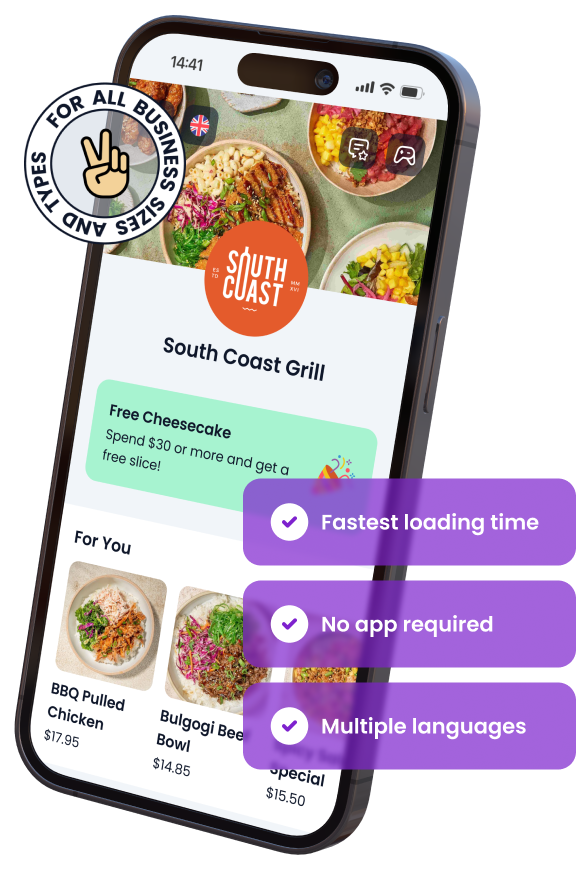
In This Article

Free AI Tools for Restaurants
TRY NOW ➜

Feature your must-try items for quick visibility
Pin your selected items to the top of your menu. Perfect for bestsellers, new arrivals, or chef’s picks.


